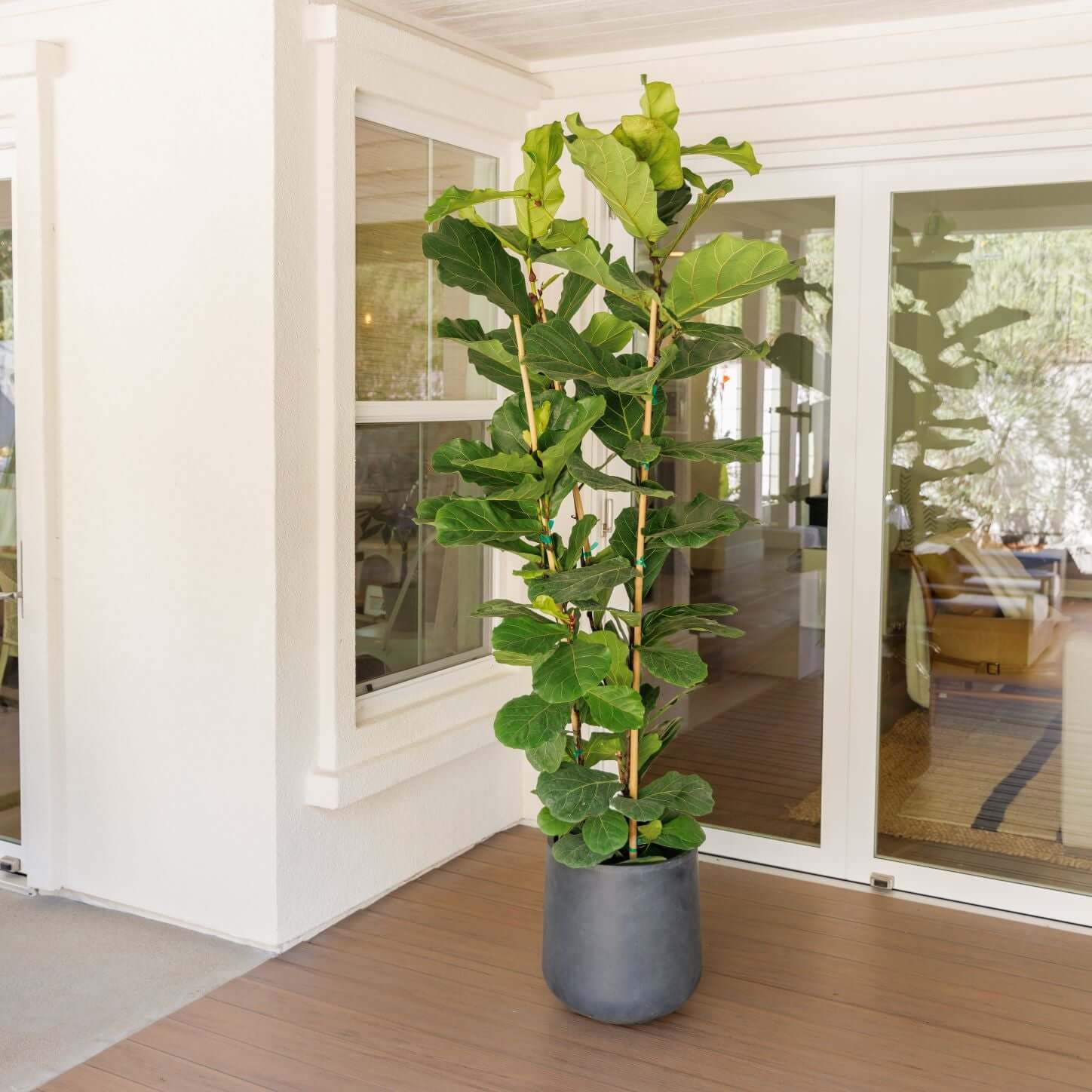
Fiddle Leaf Fig Tree
Ficus lyrata (F. pandurata)
Delivery
24-hour money-back guarantee
Free delivery on orders over $349
Big Project? Call 888-444-1126 for bulk rates!
The Ficus lyrata, commonly known as the Fiddle-Leaf Fig, is a striking indoor plant that can add a touch of the tropics to any home. With its large, violin-shaped leaves that grow upright, this plant is a statement piece ideal for floor-standing containers. In its native tropical habitats, it can reach heights of 40 feet or more, but indoors, it's manageable at around 6 feet or more, making it perfect for spacious rooms with high ceilings.
The impressive fiddle-shaped leaves can grow to a stunning 12-15 inches long and 8-10 inches wide, comparable to the size of a small violin. While Ficus lyrata thrives in tropical, warm, humid conditions, it can be grown outdoors in Southern California if sheltered from the wind and in frost-free climates.
As an indoor plant, the Fiddle Leaf Fig tree adds a bold, architectural element to any room. Its lush foliage and stunning structure make it a popular choice that compliments any design style. It enjoys bright, filtered light and can tolerate some direct sunlight, especially when placed near an eastern-facing window. Its robust nature allows it to withstand varying conditions, making it a relatively easy plant to care for, provided it’s given a stable spot where it can bask in the light.
Maintaining the health and beauty of your Ficus lyrata is straightforward. Ensure the soil remains moist but not waterlogged, allowing the top inch to dry out between waterings. This plant benefits from a good, fast-draining potting mix and appreciates a seasonal application of indoor fertilizer to support its vigorous growth. Regular dusting of the leaves with a soft cloth will keep them looking their best and allow for optimal light absorption.
The Fiddle-Leaf Fig is a resilient, striking plant that can transform any indoor space into a tropical oasis. With its dramatic foliage, easy-care requirements, and adaptability, it’s no wonder this plant is a popular houseplant. Give your Ficus lyrata the right conditions, and it will reward you with lush, vibrant growth for years to come.
How big does a Fiddle Leaf Fig Tree grow indoors?
What kind of light does it need?
How often should I water it?
Does it like humidity?
6-15 ft.
3 ft.
Moderate
Perfect Your Landscape With Expert Help
Customize your yard with confidence. Schedule your free consultation today and bring your outdoor space to life!
